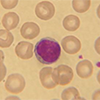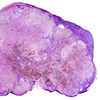Serum Uric Acid (Urate)
Specimen Volume
1 mL bloodSample Preparation
Centrifuge
Turnaround Time
1 daySample Processing In Laboratory
Usual
Sample Stability
5 days at 2 to 8°C
General Information
Uric acid (urate) is the final metabolite of endogenous and dietary purine nucleotide metabolism. It is the product of xanthine oxidase–catalyzed conversion of xanthine and hypoxanthine.
Hyperuricaemia may occur due to increased formation of uric acid due to primary causes such as inherited metabolic diseases or secondary causes such as increased intake, increased nucleic acid turnover (e.g. in leukemia, myeloma or chemotherapy) or tissue hypoxia. It may also occur due to decreased excretion due to AKI, CKD or preeclampsia. Asymptomatic hyperuricaemia is frequently detected via biochemical screening. Long-term follow up of these patients should be undertaken because many are at risk of kidney disease as a result of hyperuricaemia and hyperuricuria. Few of these patients ever develop the clinical symptoms of gout, a systemic disease caused by the buildup of uric acid in the joints
Hypouricaemia is much less common than hyperuricaemia and may be due to severe hepatocellular disease, defective renal tubular absorption of uric acid (e.g. in Fanconi syndrome) or over-treatment with allopurinol, 6-mercaptopurine or azothioprine. Very rarely hypoyricaemia may be to an inherited metabolic defect, such as those which cause a xanthine oxidase deficiency.
Urinary uric acid measurement, together with serum uric acid, should be perfored in stone formers as hyperuricuria is a risk factor for the formation of both uric acid stones and calcium stones.
Patient Preparation
None
Reference Range
200-430 µmol/L (Males)
140-360 µmol/L (Females)
(Source : Pathology Harmony Recommendations)
Specifications
-
EQA Status:
NEQAS
- EQAS Scheme: Yes








